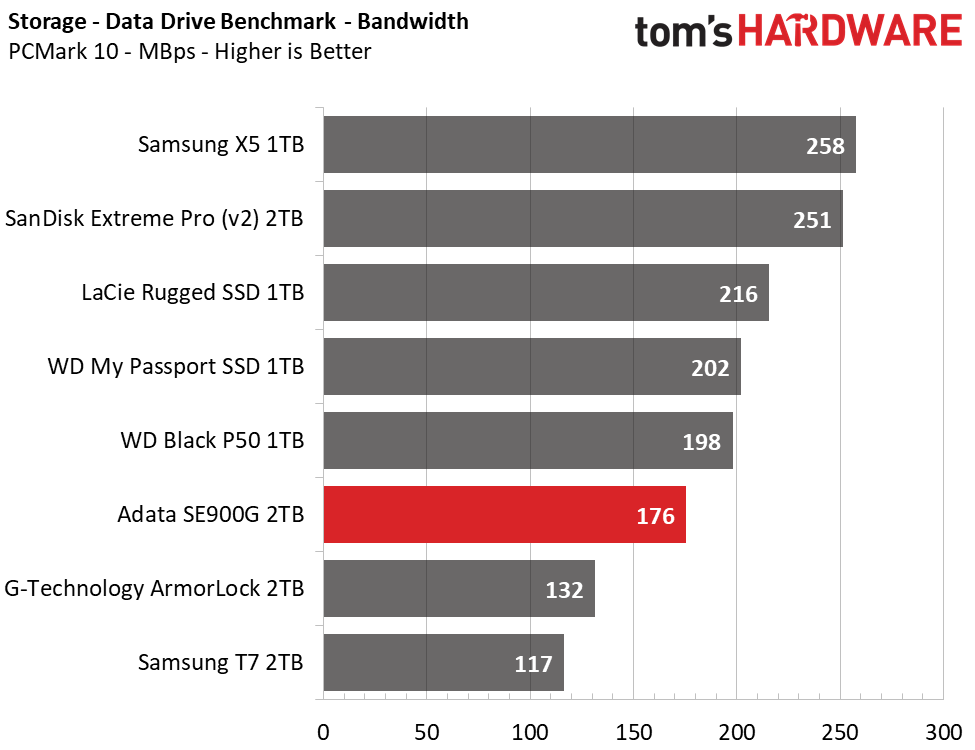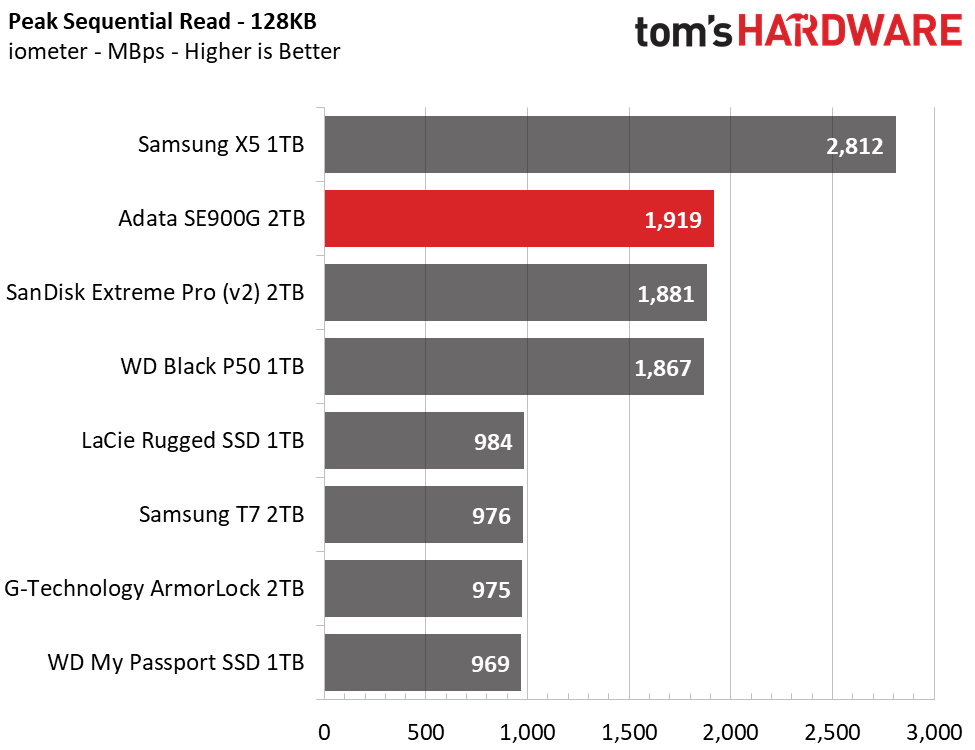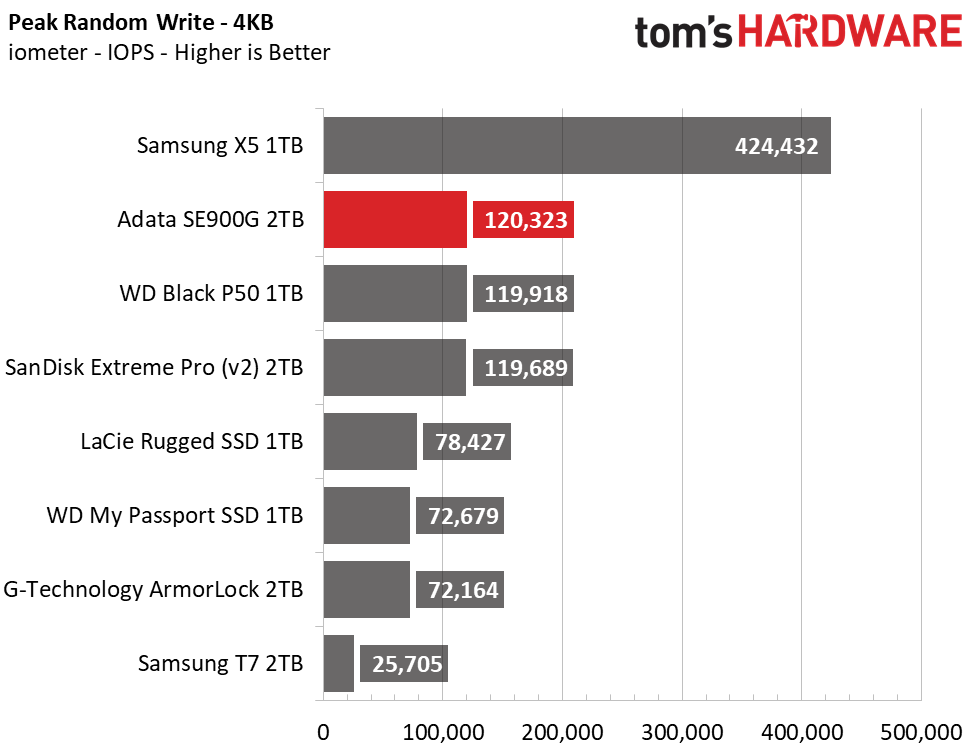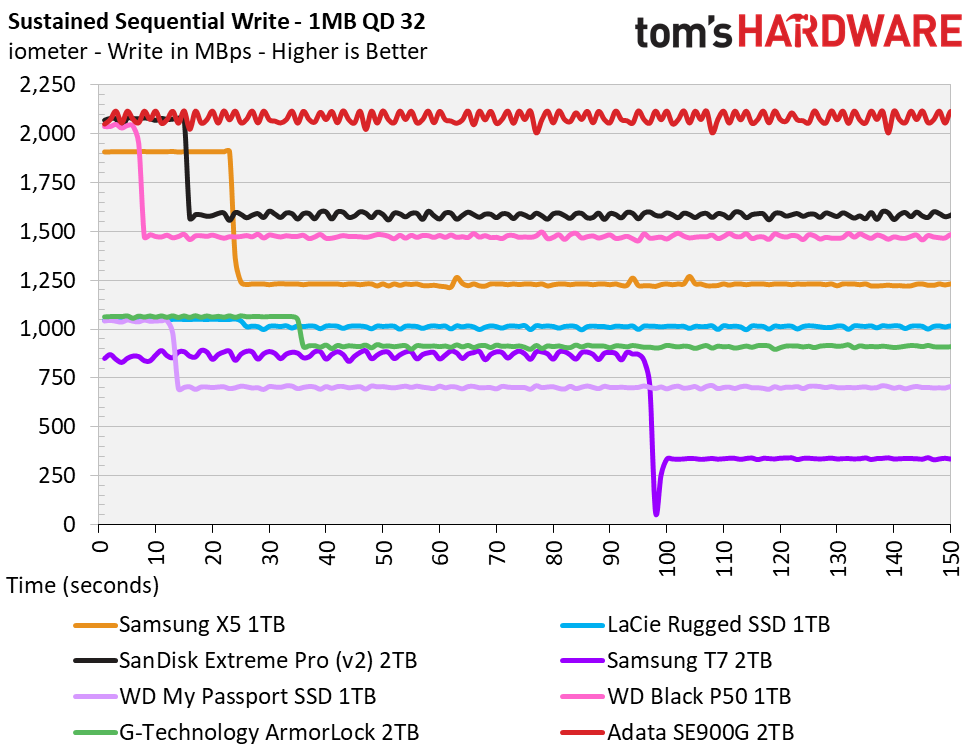Why you can trust Tom's Hardware
Comparison Products
We put Adata’s SE900G up against some of the best portable SSDs on the market. We include SanDisk’s Extreme Pro v2 and the WD_Black P50 for 20 Gbps competitors, as well as Samsung’s Thunderbolt 3 powered X5. Additionally, we included the Samsung T7, LaCie Rugged SSD, WD My Passport SSD, and G-Technology ArmorLock Encrypted NVMe SSD as 10 Gbps competitors.
Game Scene Loading - Final Fantasy XIV
Final Fantasy XIV Shadowbringers is a free real-world game benchmark that easily and accurately compares game load times without the inaccuracy of using a stopwatch.
With a score of 17.38 seconds during this game loading benchmark, the Adata SE900G took second place only to the Samsung X5 and outpaced the 20GBps competition.
Transfer Rates – DiskBench
DiskBench is a storage benchmarking tool that allows us to test the transfer or copy performance of a storage device with real data. We test external drives with three file transfers that consist of 25GB of photos (10GB of jpgs and 15GB of RAW photos), 50GB of movies, and 25GB of documents. First, we transfer each folder from a 1TB NVMe SSD to the external device; then we follow up by reading a 3.7GB 7-zip file and a 15GB movie back from the device.





Adata’s SE900G delivers very fast read speeds, placing second once again to the Samsung X5. It also does well while writing our test folders, only coming up short in the 25GB document folder copy. It still outperforms the 10GBps SSDs in the test pool, though.
Trace Testing – PCMark 10 Storage Test: Data Drive Benchmark
PCMark 10 is a trace-based benchmark that uses a wide-ranging set of real-world traces from popular applications and common tasks to measure the performance of storage devices. To test drives that store files rather than applications, we utilize the Data Drive Benchmark.



Taking sixth place, the SE900G’s PCMark 10 results come up short compared to most of the other drives. LaCie’s Rugged SSD and WD’s My Passport SSD both outpaced the SE900G, even with their more restrictive 10 Gbps bus.
Get Tom's Hardware's best news and in-depth reviews, straight to your inbox.
Synthetic Testing - ATTO / iometer
iometer is an advanced and highly configurable storage benchmarking tool while ATTO is a simple and free application that SSD vendors commonly use to assign sequential performance specifications to their products. Both of these tools give us insight into how the device handles different file sizes.










The sequential performance output from Adata’s SE900G scales well with most files sizes, but there could be some minor improvement reading files in the 8KB - 256KB range. When probing the SSD for 128KB sequential performance, speeds peaked at 1,919/1,966 MBps read/write.
The SE900G has among the best random responsiveness in the comparison pool, scoring a response time as low as 0.087 milliseconds, but random write performance is hampered by the USB interface. Samsung’s X5 can respond roughly 40% faster to QD1 random write requests than the SE900G.
Sustained Write Performance, Cache Recovery and Temperature
Write speed and temperature are two important and inter-related metrics for external devices. Official write specifications are only part of the performance picture. Most SSDs implement a write cache, which is a fast area of (usually) pseudo-SLC programmed flash that absorbs incoming data. Sustained write speeds can suffer tremendously once the workload spills outside of the cache and into the "native" TLC or QLC flash.
We use iometer to hammer the SSD with sequential writes for 15 minutes to measure both the size of the write cache and performance after the cache is saturated. We also monitor cache recovery via multiple idle rounds as well as the temperature of the drive via the S.M.A.R.T. data and an IR thermometer to see when (or if) thermal throttling kicks in and how it impacts performance.





The 2TB SE900G delivered solid write performance during our testing. The SE900G absorbed 320GB of data at a rate of roughly 2.1 GBps before degrading to 1.2 GBps for the remainder of the test. After we let the drive idle just 30 seconds, the SE900G wrote an additional 320GB of data before degrading again. That means the drive recovers and rebounds very quickly. It also remains relatively cool under heavy operation. Surface temperatures remained under 45 degrees Celsius after filling the SSD to half of its capacity, and no thermal throttling occurred.
MORE: Best SSDs
MORE: How We Test HDDs And SSDs
MORE: All SSD Content

Sean is a Contributing Editor at Tom’s Hardware US, covering storage hardware.
